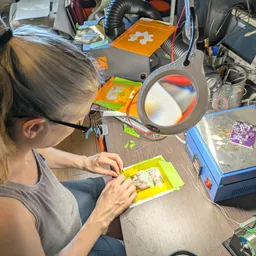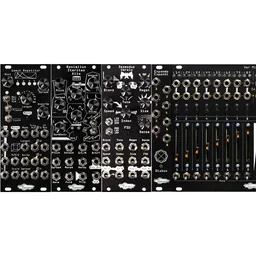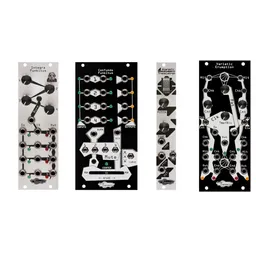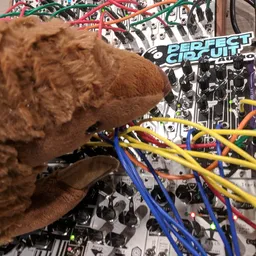Last month, we celebrated the 10-year anniversary of Noise Engineering. Beginning as a weekend project, Noise Engineering has now grown into something much bigger than any of us really expected, with many wonderful memories and a few interesting challenges along the way. Today, we’re taking a look back at how things got started, an overview of the company’s history, and next week we'll share some of our favorite moments along the way.
How it started
Noise Engineering began when Stephen made a bet with a friend and built a prototype of the Ataraxic Translatron over a weekend. After sharing the design with a few other members of the community, there was enough interest that he ordered a full production run of the module, and it began making its way into systems around the world.

Spurred by this success, Stephen designed a few more modules. Zularic Repetitor and Numeric Repetitor were created around this time, and are still in production to this day. The turning point, though, was the release of the original Basimilus Iteritas, which revolutionized percussion synthesis in the format and created many hallmarks of the Noise Engineering sound.

In 2016, Stephen, now joined by Kris, decided to quit their jobs and take Noise Engineering full time.

Kris jamming on a big Eurorack system
2016 was marked by the release of Basimilus Iteritas Alter, the sequel to the original BI, and was single-handedly responsible for much of the initial growth of Noise Engineering. The next few years were marked with a number of prominent releases, like Mimetic Digitalis and Clep Diaz, and the company started to expand in 2018.

Stephen met the owner of BIA #001 at an early Superbooth.
In 2020, we released Desmodus Versio, bringing the module platform concept to life, and allowing users to expand their systems in whole new ways. Versio was soon followed by Legio, and eventually Alia, creating a trio of customizable and flashable modules in compact packages. The community rallied around the open-source support for Versio and Legio, too, creating some extremely fun and unique firmwares.

A very early prototype of Desmodus Versio. Stephen played a set at MOTS with this prototype glued to the side of his case.
We heard from a lot of users that they really wanted a plugin version of a lot of products, so in 2021, VST, AU, and AAX plugins brought the Noise Engineering sound to folks that didn’t want to deal with too many patch cables. Plugins helped fulfill the company goal of making our products as accessible to folks wherever they are, and however they like to work – as well as bringing some fun new capabilities, like polyphony and patch recall, to the table.
2023 was the Year of the Mixer, and we finally released Xer Mixa, which had existed in some form almost as long as the company has.

A case of early Noise Engineering prototypes, most of which have evolved into released products! Extremely early mixer prototypes can be seen at the bottom right.
These are just a few of the highlights, though, we have so many different things in our lineup. One of our core values is that we continually challenge ourselves (some things are more challenging than others…), and that means we spend a lot of time honing our ideas into something new and innovative.
How it’s going
Now, we’re a small but mighty team dedicated to bringing about a whole new era of Noise Engineering products to your setup. With big, innovative projects like Xer Mixa, as well as new top secret ventures we have in the works, we’re excited for the future and eager for you to get your hands on the things we’ve been working on.
Of course, we wouldn’t be celebrating this occasion if it weren’t for the continuing support of the synth community. We’re incredibly lucky to be able to do what we do, and you, our dear customers, are the reason that we get to do it. We appreciate you greatly, and we’re looking forward to the next ten years of Noise.






